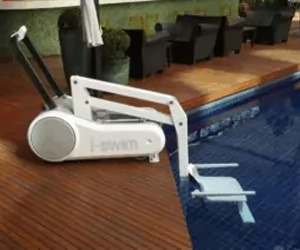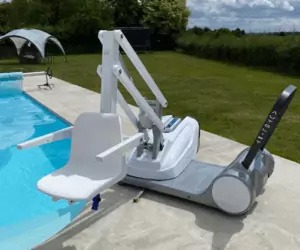At Dolphin in the West Midlands, our team of mobility experts can provide tailored advice and recommend the most suitable pool hoist for your environment and requirements.
Finding the Right Solution for Your Pool
The location and layout of your pool play a big role in determining which hoist will work best.
-
The ground must be level and stable.
-
For fixed pool lifts, you’ll need a suitable area to install the socket fitting.
-
It’s also useful to know what lies beneath the pool deck before installation begins.
Who Will Be Using the Pool Lift?
The needs of the user are the most important factor when choosing a hoist. Consider:
-
Will the lift be for one person only or for multiple users?
-
How will users be transferred? Most lifts use a spreader bar and sling, or a chair seat option for greater comfort.
-
What level of support will carers, attendants, or lifeguards need when operating the equipment?
How Pool Hoists Work
Pool hoists typically operate in one of three ways:
-
Hydraulic systems
-
Battery-powered systems with removable battery packs that charge via a standard 3-pin socket
-
Water-powered systems, which are less common (and not recommended by our technicians)
Manual vs. Powered Rotation
Another key feature to consider is how the hoist rotates:
-
Manual rotation – the hoist must be turned by an attendant, carer, or lifeguard.
-
Powered rotation – uses an additional motor, allowing the hoist to be rotated at the touch of a button. This option gives the user the ability to operate the hoist more independently.
By understanding the needs of the users, the pool environment, and the features of different hoist types, you can select a safe and practical solution that makes swimming more inclusive and enjoyable for everyone.


